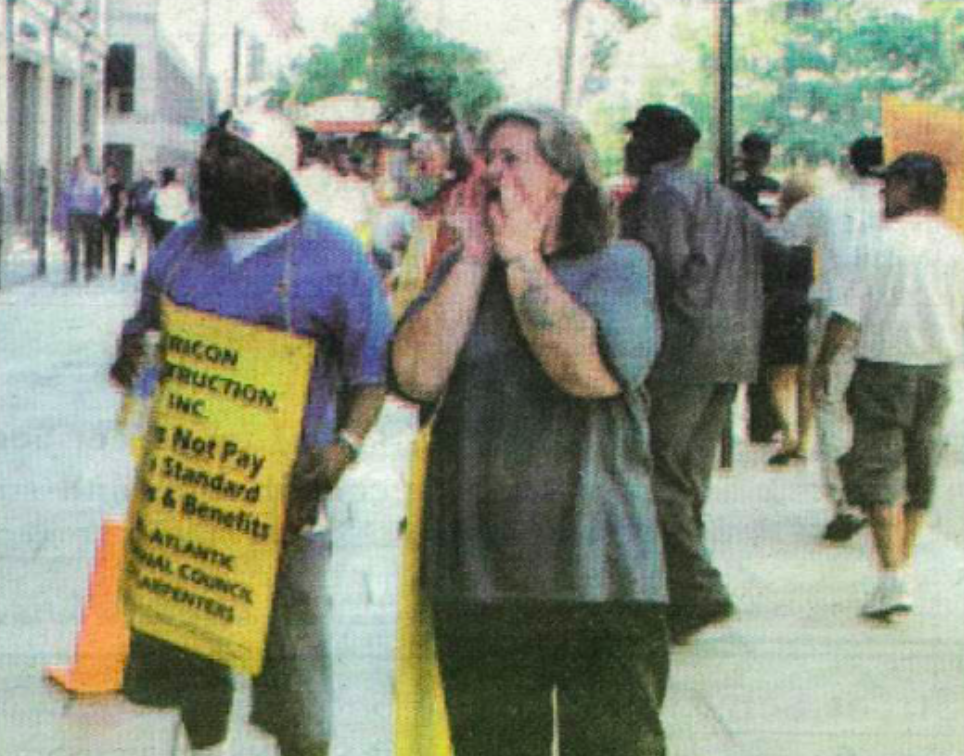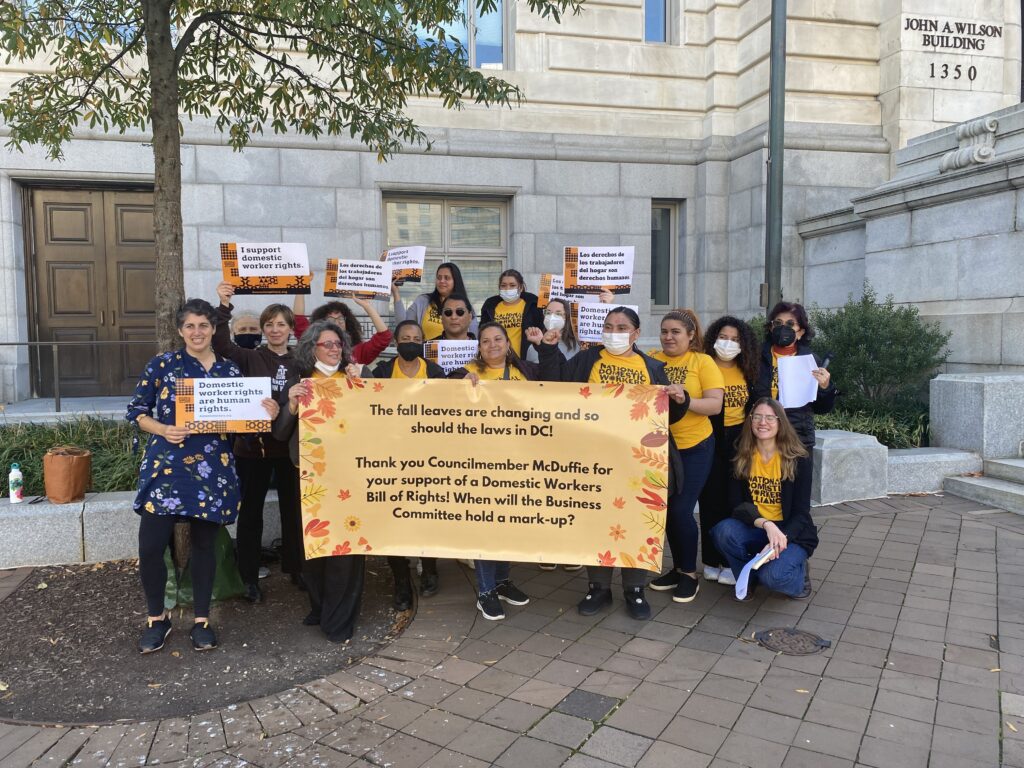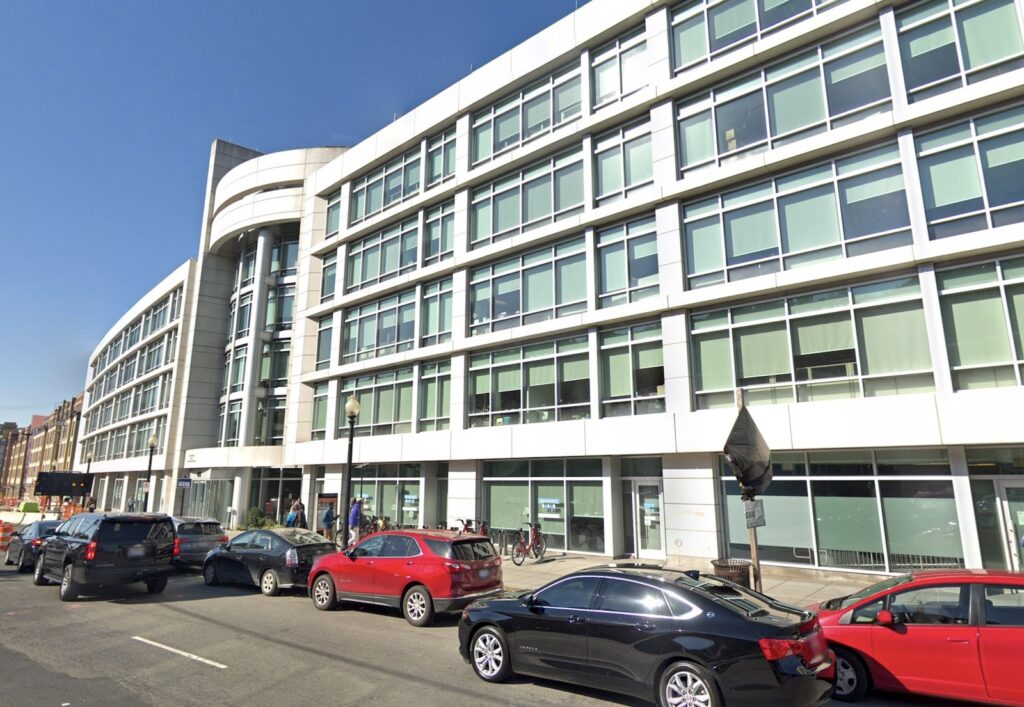It’s early morning on one of the hottest days of the summer, but there are already half a dozen homeless people crowding around Mike Zaner as they wait for breakfast at Zacchaeus Community Kitchen. Zaner is there to offer them jobs – as protesters.
Zaner works for Mid-Atlantic Regional Council of Carpenters, which has been carrying out daily two-hour protests against Tricon Construction a 601 13th St. NW, an office building, located three blocks away from Zacchaeus, where Tricon is doing construction work on the ninth floor.
The union is objecting to what it says are the substandard wages Tricon is paying. Instead of having carpenters chant and protest every day, they have hired homeless people to do so.
According to George Eisner, the union’s organizing director, most of the protesters marching in front of the building carrying signs and reciting chants live in shelters. He cited Zacchaeus in particular as a source for new protesters.
While it is unclear how many unions hire homeless people to participate, Zaner said that the Council of Carpenters is just one of several across the country to do so. And many people on both sides agree that unions and the homeless populations benefit from the practice.
Jonathon Ward, manager of the Downtown Services Center that houses Zacchaeus, said he supports the effort. He and Zaner both cited a similar program in Atlanta; Ward called the Atlanta program “a national model.”
Ward said his goal was to promote employment for Zacchaeus clients and that the union represent “another opinion, another resource” for doing that. He described the work as a “foot in the door” that helps his clients “get in the mindset” of working and become “reconditioned to be in the work environment.
“You’ve got to crawl before you can walk,” he said.
The protests themselves give people a work history and income history, which can be helpful if they apply for an apartment rental or for credit, Ward said. “We’re not going to save the world, but we’re helping them out,” he added.
More importantly, Zaner said, is that those hired as protesters could potentially join the union’s apprentice program.
Ward said the work helps make his clients self-sufficient. It increases their self-respect because they can say, “I have my pay Friday like everyone else,” he said. He said he has seen a change for the better in many of those who have taken the job.
The protesters, who are paid $8 an hour, receive a check every Friday, with a one-week lag. They can take the check to a nearby Wachovia bank, said Alan Jones, a Street Sense vendor who joined the protests after observing them from his vending site at a Metro exit on the same block. He said he sees about 20 or 30 protesters each day.
At Zacchaeus, the only apparent screening is that Zaner asks the candidates for a Social Security card and photo identification. Jones said he was “not really” asked whether or not he supported the cause, but in a telephone interview he said he supported the union its claims.
It isn’t clear how widespread this model for recruiting protesters is. Zaner said the idea wasn’t new. But a representative from another union said he “would think it would be unusual,” noting he had not come across it at either of two unions at which he had worked. He said that practice could be complicated if the press wanted to interview the protesters.
It “wouldn’t help the union’s efforts” if the protesters were unable to talk about the union’s complaint, he said.
Other unions including the American Federation of Labor-Congress of Industrial Organizations (AFL-CIO), either could not be reached for comment or said they did not have enough information to discuss the matter.
Michael Stoops, acting executive director of the National Coalition for the Homeless, also expressed concern that “right-wing conservative media” would seize on the practice to undermine the “legitimate demands” of the union.
In general, he said, hiring the homeless as protesters was not inherently objectionable if a homeless protester agreed with the union’s position and was not simply a “prop” holding a sign. But he also expressed some reservations, saying the practice would be more understandable in the case of a round-a-clock picket rather than a two-hour demonstration. For the relatively short period, it is not unreasonable to expect the union to staff the protest with its members and supporters, he said.
But Eisner said the union carpenters couldn’t afford to put aside their work and join the protest.
And Zaner added the protesters are briefed on what they will be doing and that they are free to decline it. “We’re not forcing anyone to do what we’re doing,” he said.
The workers are “basically paid activists” and in some ways are not very different from Washington lobbyists or the staff of organizations such as the Salvation Army, he said. Ward said the work was “essentially no different from temping.”
Stoops said homeless people are part of a vulnerable population, but the protest work was “not the worst thing someone could do.”
He drew distinctions among various kinds of short-term work homeless people have been offered in the District. The city’s marshal service has hired homeless people to carry out evictions, a practice Stoops said he opposed. More acceptable, he said, was the long-standing practice of hiring homeless people to hold a place in line for lobbyists at Capitol Hill hearings.
“Americans hate standing in line,” and the homeless, who wait hours in lines for necessities like food, shelter and showers, often have a great deal of experience in that area, he said.








